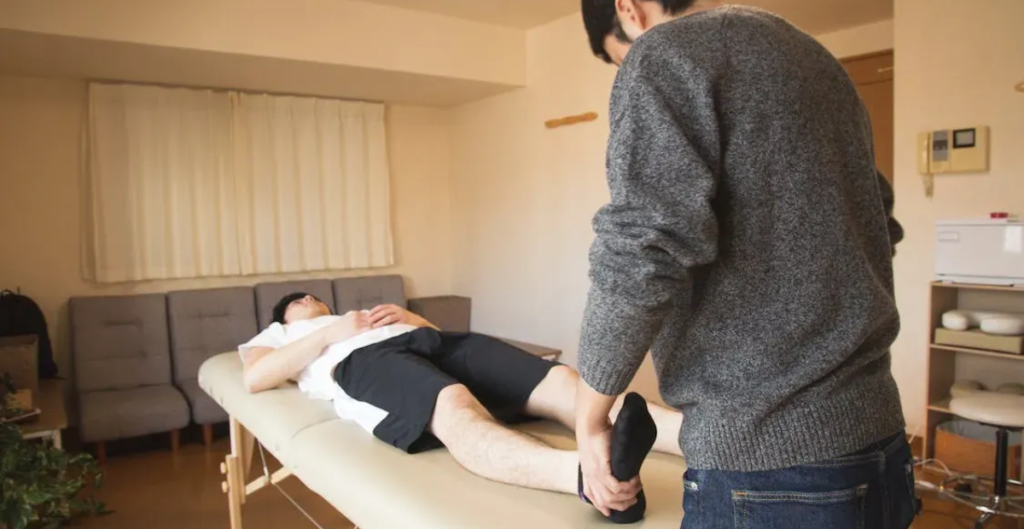Chiropractor Cracking: What You Need to Know
In recent years, many individuals have become inquisitive about a chiropractor’s cracking method. Whether it’s yourself or a video of a chiropractor making those well-known ‘cracking’ noises, it can be both amusing and a little disturbing. But what is the goal of this cracking, and is it as beneficial and harmless as everyone claims?
In this blog post, we will discuss all the aspects that you should understand regarding chiropractor cracking. This will include what it is, how it works, its pros and cons, and commonly asked questions among others. Thus by the end of the post, you will know what chiropractor cracking truly meddles with.
Introduction to Chiropractor Cracking
Chiropractor cracking – or spinal manipulation, as it is also called – involves the application of a force to the vertebral joints in a controlled manner. The technique enhances alignment, alleviates discomfort, and improves movement. Though it can be strange for some to associate the sound of a ‘crack’ with healing, it is usually harmless and functional when done in the right manner.
What is Chiropractor Cracking?
Chiropractor cracking is that crackling noise that the spine or other joints of the body make when the joint chiropractor works on you. These alterations are usually made through quick and controlled pressure applied on a given joint, which is often accompanied by a loud popping or cracking sound. This is because the joint fluid contains gas bubbles that escape under pressure.
The Origins of Chiropractor Cracking
Chiropractic care was founded by Daniel David Palmer in 1895, and back then it was already being practiced. Palmer, who founded this field of medicine, was convinced that any misalignment of the spine called subluxation would hinder the body’s self healing. Apart from cracking, adjustments or chiropractic manipulations became an important part of the practice, making it possible to treat the patient without surgery.
The Science Behind the Cracking Sound
Understanding the science behind the cracking sound can demystify the process and clarify why the sound is a normal part of chiropractic adjustments.
Why Do Joints Crack?
During the chiropractic adjustment the crack sound produced is from release of gasses which are mainly nitrogen, oxygen and carbon dioxide that are dissolved in the synovial fluid of the joints. A chiropractor applies force, the joint is pulled apart and the gasses are expelled which creates the typical ‘pop’ sound.
The Role of Cavitation
This phenomenon is referred to as cavitation. When the pressure within the joint diminishes, which happens towards the end of the adjustment, gas bubbles appear and explode, thereby producing the cracking sound. This does not signify that the bones are either injured or broken; instead, it indicates a successful repositioning of the joints.
How Chiropractors Induce the Crack
In order to provide the audible ‘crack’ that is often so desired by the patient, the chiropractor will employ many different techniques, the most common of which is a high-velocity, low-amplitude (HVLA) thrust. This technique involves a high speed, precise maneuver on a joint in order to extend its motion and alleviate discomfort. The noise signifies that the joint is back in its proper position.

Common Techniques Used in Chiropractic Adjustments
Different types of chiropractors like infant chiropractor, scoliosis chiropractor, joint chiropractor and pediatric chiropractor employ various techniques to address different issues, each with its unique method and purpose. Some of the techniques used by chiropractors are detailed and explained below:
High-Velocity, Low-Amplitude Thrust (HVLA)
Hence, a fast, concentrated thrust is used to adjust a certain joint. It’s the technique most people imagine when they picture a chiropractor cracking some bones and restoring normal function to the joint by increasing range of motion and decreasing stiffness and pain.
Flexion-Distraction Technique
This technique is used mainly for patients who suffer from low back pain or have bulging / herniated intervertebral discs. It consists of slow repetitive movements, which draw the spine in and can be beneficial without requiring any cracking.
Activator Method
In the activator method, a small handheld gadget is used to apply an impulse to a specific joint. In this method, there is no cracking sound as in manual adjustments and therefore, is ideal for patients that are averse to manipulative procedures.
The Benefits of Chiropractor Cracking
Chiropractor cracking can offer several benefits, including pain relief, improved mobility, and better posture, contributing to overall well-being.
Pain Relief
To begin, it is no surprise that one of the most common reasons why people seek chiropractic therapy is to ease pain. Chiropractic adjustments can reduce pain in the back, neck, joints, or any other portion of the body by restoring normal alignment and relieving pressure on the painful areas.
Improved Mobility
Back or knee cracking in chiropractic therapy helps enhance range of motion because it releases tension on the joints allowing better movement. This is more so for those who have problems with stiffness or movement because of misalignment.
Better Posture
The spine when misaligned often leads to the problem of postural issues which later leads to subsequent body discomforts and pain. This is however not the case as a chiropractor will do regular adjustments to the spine in order to maintain proper posture and hence improve the overall functioning of the body mechanics.
Risks and Side Effects of Chiropractor Cracking
While generally safe, chiropractor cracking may involve mild soreness and potential risks, especially for certain individuals.
Mild Soreness and Discomfort
It is quite expected that a person will feel slight pain or discomfort following a chiropractic procedure. Most of this soreness is caused by the reorientation of the spine, hence most patients should be ready to bear the soreness for not more than twenty-four to forty-eight hours.
Potential Risks for Certain Conditions
Chiropractor cracking is therapeutic and most patients can undergo this procedure. However, it can be dangerous to some patients with bone density problems or spinal problems. In such patients, chiropractic adjustments may be more injurious than helpful, as there is a tendency to induce fractures among other injuries.
How to Avoid the Risks
To reduce the chances, always go to a certified and experienced chiropractor. He or she will assess your health records and do some physical examination in order to know whether it is fit to try cracking your back. Your chiropractor should be informed of any adjustments you are undertaking, to help avoid any risks that may come with making an adjustment.

Who Should Avoid Chiropractor Cracking?
Certain groups, such as those with osteoporosis or severe spinal conditions, should avoid chiropractor cracking due to potential risks.
Individuals with Osteoporosis
This condition indicates mass loss, which will eventually result in fracturing of the bones. Such patients would not be provided with chiropractic joint cracks as those involve a lot of forceful pressure applied on the joints.
People with Spinal Conditions
Without first seeing a doctor, chiropractor cracking is not advised for people with spine-related conditions such as disc protrusions or spinal stenosis. These conditions may increase the risk of spinal injury during cervical spine adjustments.
Pregnant Women
Chiropractic treatment involves handling of the spine, and hence such treatments, especially in the third trimester, should not include aggressive spinal adjustments. However, pregnancy is one of the state where a chiropractor may apply some few treatment techniques, thus it is important to inform your chiropractor about your condition
Chiropractic Cracking for Specific Conditions
Chiropractic cracking can be tailored to address specific conditions like back pain, neck pain, and headaches, offering targeted relief.
Back Pain
Most of modern day chiropractic cracking procedures are geared towards back pain treatment. Once the chiropractic procedure aligns the spine, most of the pain issues are solved especially those ones that would compress the nerves and other structures associated with pain.
Neck Pain
Chronic neck pain can also effectively be treated using chiropractic adjustments especially in postural degenerative patients and those with whiplash injuries. The adjustment facilitates restoring of motions lost in the upper cervical spine.
Headaches and Migraines
Additionally, it has been seen that these adjustments significantly reduce headache and migraine symptoms, particularly when the primary source of the discomfort is a misaligned neck or spine. Taking a broader view, the negative effects of persistent headaches reduce following a few chiropractic adjustments.
Myths and Misconceptions About Chiropractor Cracking
Clearing up common myths and misconceptions can help people make informed decisions about the safety and effectiveness of chiropractic cracking.
Does It Cause Arthritis?
Chiropractors cracking makes it all the more persistent that the practice comes with harmful effects such as the development of arthritis. But, there is no research-based finding to back this up. Indeed, the very nature of spine manipulation ensures that there are fewer chances of developing arthritic joints.
Is It Dangerous?
The majority think that chiropractor cracking is quite dangerous because of the sound and the force applied during the procedure. Nevertheless, chiropractic adjustments are usually safe when done by a qualified practitioner. Complications are very unlikely to occur, and following an adjustment, most patients have little, if any, discomfort.
Conclusion
The practice of chiropractor cracking involves the manipulation of a patient’s spine in such a manner as to relieve pain, enhance the range of motion and maintain a healthy spine among the patients. Cracking the joints does create some uncomfortable noise but many practitioners agree that this is part and parcel of the adjustment and more often than not, it is safe to perform such procedures. Like all medical treatments, it is always best to seek the opinion of the chiropractor in regard to the safety of cracking, especially for one who has never tried it before.
In this respect, if you have any intention of going to a chiropractor, you have to know the advantages, disadvantages, and myths of chiropractic cracking, so as to come to a better conclusion. Whether it is lower back pain, neck aches or migraines you suffer from, there are a range of chiropractic adjustments that can be done with little or no invasiveness at all on the body to better one’s life.



